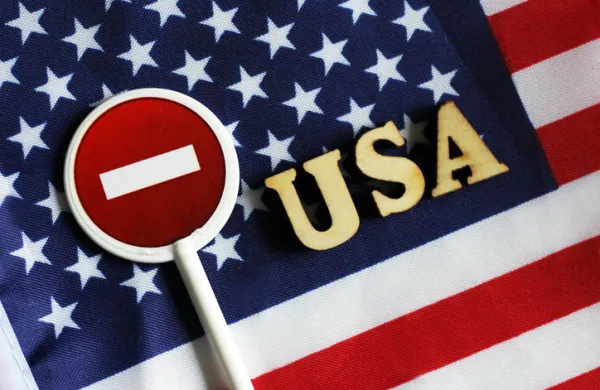Were you to seek insights on potential investment opportunities in China, you could scarcely do better than to tap someone who mines data to isolate themes and identify relevant trends – whether a spike in leveraged bear bonds or shifts in emerging markets – to help inform decision making at buy- and sell-side institutions. That’s why II sat down with Cameron Brandt, Director of Research at EPFR, an Informa Financial Intelligence business. On a daily basis, Brandt monitors the firm’s vast database of mutual fund and exchange-traded fund flows along with positioning data encompassing around 134,000 share classes with over $47 trillion of AUM. He also leads a team of quantitative and qualitative researchers that mines this database. Here’s what he had to say when II talked China with him.
What did the mutual fund flows and allocations data you collect and analyze tell you about how investors reacted to U.S.-China trade developments in the years leading up to the 2020 general election in the U.S.?
Cameron Brandt: Some of the turbulence in the U.S.-China relationship was reflected in the flows – or lack of flows – to actively managed funds dedicated to China. However, the actual impact was pretty neutral because indexed funds were taking in a lot of money and allocating an increasing share of those inflows to China. Allocations to China by diversified funds, which are a very popular group – especially when investors think there is value in emerging markets but can’t determine individual winners – steadily increased, albeit with periodic dips. By the end of 2020, the GEM [Global Emerging Markets] equity funds that EPFR track were, on average, committing a third of their portfolio to China. That means $1 of every $3 committed to this group by investors is going into Chinese stocks.Have you seen any change in flows since the 2020 general election in the U.S.?
Brandt: Yes. We’ve seen a significant uptick in flows into China equity funds. This uptick included some eye-catching weeks that rank, in terms of net inflows, only behind that aberrational week back in mid-2015 when China did what it needed to do to short circuit the sell-off that was occurring in its domestic equity markets. If you are looking for a cause, the U.S. election results certainly created a sense of relief for some investors. That was especially true for retail investors. They’ve historically been a force in Chinese domestic markets, but they’ve tended to see mutual funds as a vehicle of last resort for getting exposure. This time around retail flows surged in the wake of the U.S. presidential election.What was different about this time around?
Brandt: Retail investors seem more comfortable with equity funds, and – despite faith in their own abilities – have been burned often enough by the market that they are starting to develop some faith in professional asset managers. We’ve seen consistent retail inflows into the China equity funds we track since July 2020, and that streak is still going despite the downturn Chinese markets experienced in mid-February. Retail flows have lost some momentum recently, but I think this has less to do with the realization that the Biden administration could be equally prickly on trade, and more to do with what we know from 2013 and 2014 – namely, any sign that the punch bowl of fiscal and monetary stimulus is going to pulled back does not play well to the general markets and people investing them.
There was a time when trade tensions between China and the U.S. raised concerns about supply chain relocation. Has that possibility ebbed?
Brandt: Your question mirrors the broader debate in the U.S. and elsewhere about the costs of being so reliant on China for so many stages of the global production and value chain. Following last year’s pandemic-induced selloff, we did see an increased level of interest in Vietnam, Mexico, and the Philippines. These were the three markets that investors anticipated would be the major beneficiaries of a concerted effort to move supply chains out of China. However, at the moment fund groups dedicated to those three markets are seeing more muted inflows and outflows. People still expect many companies will take steps to lessen their dependence on China as the cornerstone of their supply chains. But they now expect those shifts will be gradual.What does the data you see every day tell you about opportunities for investors in Mainland China going forward?
Brandt: Everyone is expecting explosive growth in the U.S. and the U.K. during the second half of this year, and even continental Europe is predicted to enjoy a broad rebound. When you look at anticipated demand against how lean inventories are – the shortfall of products – China’s manufacturing base represents the best opportunity to meet that demand. As a result, Chinese industrials look promising. There is a lot of chatter about Chinese tech being an opportunity, but I view it as less than the bargain it’s perceived as until it’s clear where the government sees the tech sector sitting in terms of its obligations to the state and its freedom to innovate.Hong Kong is a political mess – but does it present opportunities separate from those in Mainland China?
Brandt: After struggling during the events which culminated in the imposition of the new national security law, funds dedicated to Hong Kong recorded net inflows for most of the final quarter of 2020 and the first quarter of this year. The law notwithstanding, the Chinese government wants Hong Kong to remain a global financial center. The territory still has the infrastructure, reputation, and skilled people to remain so, and that is not going away overnight. It is still viewed as an important hub by most of the major global financial players.You mentioned Hong Kong is enjoying a rebound. How does that differ from a recovery – and not just in China, but globally?
Brandt: That is an important question. At what point does a rebound become a recovery? Or fail to do so? We are on the cusp of a major rebound fueled by massive fiscal stimulus and ultra-lose monetary policy – the classic sugar rush. For it to become a recovery, that spending and cheap money needs to lay down patterns and drive investment that will maintain a significant chunk of the economic momentum when the initial rush is over.In the U.S., we’re going to see a major overhaul of the country’s infrastructure. At the same time, productivity gains are being realized at numerous levels thanks to the accelerated adoption of so much technology into daily and working lives. But when you throw so much money at something in a very short period of time, the law of unintended consequences often has a field day. For example, there are fears of a green bubble as increasingly speculative corners of the clean energy industry rush to get a share of the available money.

And what if it is just a rebound?
Brandt: Then the looming inflation question becomes much more pointed. If it’s a rebound, a business is more likely to just run the machinery it has as hard as it can rather than investing in assets that might be stranded when the rush is over. That’s a much more inflationary scenario than a recovery response, which would drive investment in infrastructure, human capital or machinery that feed growth in the long run rather than just making hay off the immediate rush. In this context, we’re paying more attention to fund allocations at the industry level. For example, are fund managers increasing their exposure to capital goods plays or technology hardware? We can break that data down to regional and national levels. If fund managers rotate their portfolios towards food, beverage, and media, I think that’s a signal they’re not convinced we’re moving beyond rebound into recovery. However, if we start to see measurable upticks in allocations to technology hardware, semiconductors, and capital goods, then you can say with more confidence they have some faith the initial momentum will translate into something more durable and long term.Where do you come down on the question of China being its own asset class in institutional portfolios?
Brandt: I’m in the camp that it should be, as viewed through the tight lens of the mutual fund world – especially in areas such as diversified global emerging-markets funds. When a third of your portfolio is tied up in a single market – which is increasingly becoming industry standard – concentration risk is high. Those risks might be worth taking, but if you’re an investor putting money into a diversified fund and inadvertently betting a third of the house – plus the garage – on China, there’s a fiduciary element involved. Do you really want that level of exposure in what is supposed to be a diversified portfolio? So, I think there’s going to be growing pressure for diversified emerging markets funds to go to a GEM and GEM ex-China model.We were talking a few weeks ago and you mentioned that some bad mojo can result when retail investment is surging in China at the same time global enthusiasm for emerging markets is on the uptick. Can you explain that?
Brandt: For various reasons, retail investors tend to move in and out of markets and asset classes much more quickly than institutional investors, and in less predictable ways. In the case of China, increased levels of retail involvement in have historically contributed to heightened volatility. In 2015 and 2018 spikes in retail flows to the funds we track preceded significant market corrections.Moreover, bouts of enthusiasm for emerging markets frequently don’t end well for a range of reasons from sovereign debt issues through currency collapses to events in developed markets that hit emerging ones. When Chinese markets sold off in mid-2015, for instance, they took broad sentiment towards all EM equity down with them.
Do you see potential for fixed income investors in China?
Brandt: At the moment, China’s debt is in a sweet spot. It offers positive yield in a somewhat managed currency that isn’t going to surprise you, and which is backed by a dynamic economy with a huge trade surplus. So, right now, China is the hot market for mutual fund investors looking for country level fixed- income exposure. It’s taken over to some degree from South Africa, which has tended to play that role with a currency underpinned by hard commodity demand and a first-world financial framework. We have seen weeks where flows into China bond funds are on their own keeping the overall number for all emerging markets bond funds in positive territory. That pattern could be checked abruptly if there’s a major default that no one is expecting, but there are few other credible asset classes that offer consistent 3%-plus yield in a currency that isn’t going to magically turn on you over night.Going forward, what should investors keep an eye on regarding the U.S.-China relationship?
Brandt: Outside of the obvious tensions surround China’s desire to bring what it regards as a renegade province, Taiwan, back into the fold, I think the ESG trend could be a very important factor. U.S. and European mutual fund investors believe the rebound or recovery will have a very green tinge to it. Funds that market themselves with environmental and governance credentials are consistently seeing inflows to the tune of $3 billion in fresh cash every week – and often more. If U.S.-China trade relations remain somewhat antagonistic, differences could crystallize around the window of climate change. That’s an important metric to keep an eye on. Whatever else the Biden administration does, if it doesn’t deliver significantly on ESG it’s not going to be pretty for its overall agenda.At the same time, China is taking a more pragmatic approach. It wants to talk about the environment, but only after it has energy security, so in the meantime it will likely continue to build coal plants. There is fertile ground for real and theoretical clashes based on misunderstandings in the context of climate change. This could be the area where trade relations between the two biggest economies hit maximum tension – at least insofar as they might be tense going forward. The whole world hopes the two nations find a new basis for operation and cooperation that works well for both sides. That said, I’m keeping a very close eye on how the climate change issue plays out: it could become a serious point of difference down the line.






